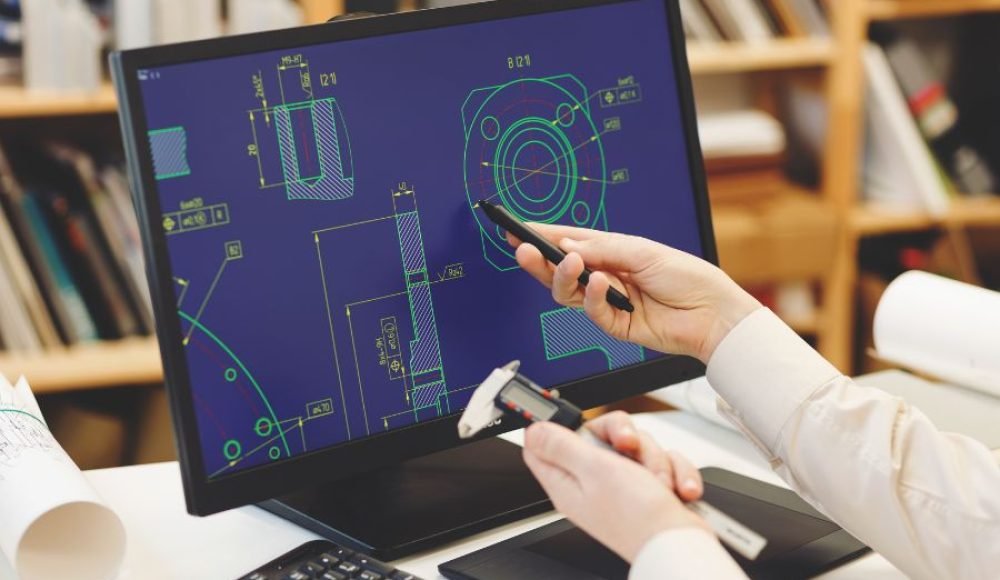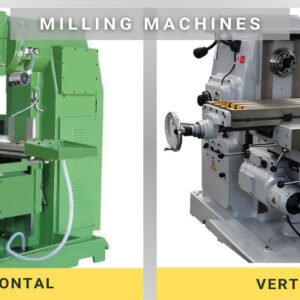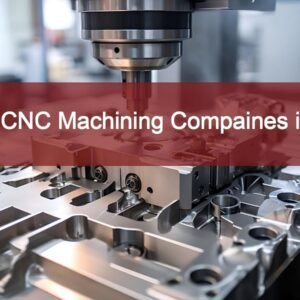في جوهرها, rapid prototyping is a game-changer in modern manufacturing and product development. إنه يمكّن المبدعين من اختبار التصميمات بسرعة, get real-world feedback, and refine products before committing to full-scale production. Instead of relying on theory or 2D drawings, companies can produce tangible models that look, يشعر, and sometimes even function like the final product.
في هذه المقالة, we’ll dive deep into the عملية, مراحل, الأنواع, and tools of rapid prototyping, exploring how it came to life, كيف تعمل, and why it has become an essential pillar of industries ranging from aerospace and automotive to healthcare and consumer electronics.
بحلول النهاية, you’ll not only understand what rapid prototyping is but also how to choose the right approach for your own project. اذا هيا بنا نبدأ!
ما هو النماذج الأولية السريعة?
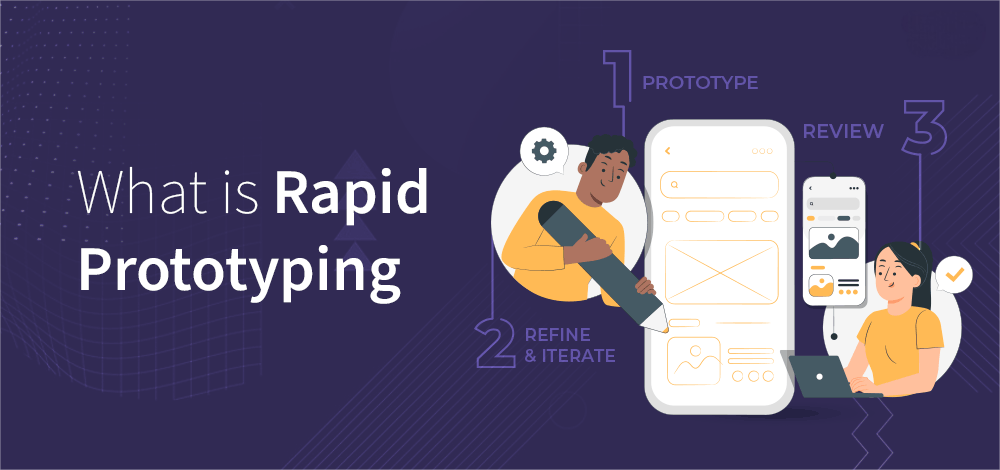
ما هو النماذج الأولية السريعة
النماذج الأولية السريعة (RP) refers to a collection of techniques used to quickly fabricate a scale model or physical part directly from a 3D computer-aided design (نذل - وغد) file. Unlike traditional prototyping, which often requires specialized molds or lengthy machining processes, rapid prototyping speeds up the journey by creating models directly, usually layer by layer.
One of the most common methods behind rapid prototyping is 3الطباعة د. هنا, materials like plastics, راتنجات, or even metals are deposited or solidified layer upon layer to build a physical object. But rapid prototyping isn’t limited to 3D printing alone. It also includes التصنيع باستخدام الحاسب الآلي, قطع المياه, صب فراغ, and laser-based processes.
بكل بساطة:
Traditional prototyping = slow, expensive, and often limited to one or two iterations.
النماذج الأولية السريعة = fast, بسعر معقول, and allows multiple iterations until the design is perfect.
This means businesses can test new product ideas without pouring huge sums into tooling, and they can also respond to user feedback almost instantly. Think of it as the “fast-forward button” of product development.
Another critical aspect of rapid prototyping is its براعه. You can make different kinds of prototypes—some that just look like the product (for presentations and marketing), and others that actually work like the product (for performance testing). This flexibility makes it a go-to solution whether you’re a startup testing an invention or a global company refining a jet engine part.
History of Rapid Prototyping
Like most breakthrough technologies, rapid prototyping didn’t just appear overnight. Its story begins in the 1980س, a decade that saw remarkable leaps in computer technology, الأتمتة, والتصنيع.
Who Invented Rapid Prototyping?
The credit for the very first rapid prototyping technique goes to Chuck Hull, an American engineer. في 1984, Hull invented stereolithography (SLA), a method that used a laser beam to solidify liquid resin layer by layer. This was the world’s first working 3D printer and the beginning of a manufacturing revolution. Hull later co-founded 3D Systems, one of the leading companies in 3D printing today.
His invention was groundbreaking because, for the first time, designers could go from a digital CAD file to a real 3D object without molds, أدوات, or manual shaping. It was like watching science fiction become reality.
How Has Rapid Prototyping Evolved Over Time?
From Hull’s initial SLA printer, the technology quickly expanded. Soon after came Fused Deposition Modeling (FDM) in the late 1980s, a technique where thermoplastic filament is extruded through a heated nozzle. Then followed Selective Laser Sintering (SLS), which uses lasers to fuse powdered materials like nylon or metal.
على مر العقود, rapid prototyping evolved into dozens of techniques, each catering to specific needs:
High-detail prototypes with SLA and DLP.
قوي, الأجزاء الوظيفية with SLS, DMLS, and SLM.
بسعر معقول, easy-to-use models with FDM printers.
Large-scale prototypes with CNC machining and waterjet cutting.
What started as a niche technology has become mainstream. اليوم, rapid prototyping is not only used in research labs but also in classrooms, hospitals, workshops, and even homes. The rise of affordable desktop 3D printers has put the power of rapid prototyping into the hands of students, hobbyists, and entrepreneurs alike.
باختصار, rapid prototyping has moved from being a luxury innovation in the 1980s to a necessity for modern product development in the 21st century.
How Does the Rapid Prototyping Process Work?
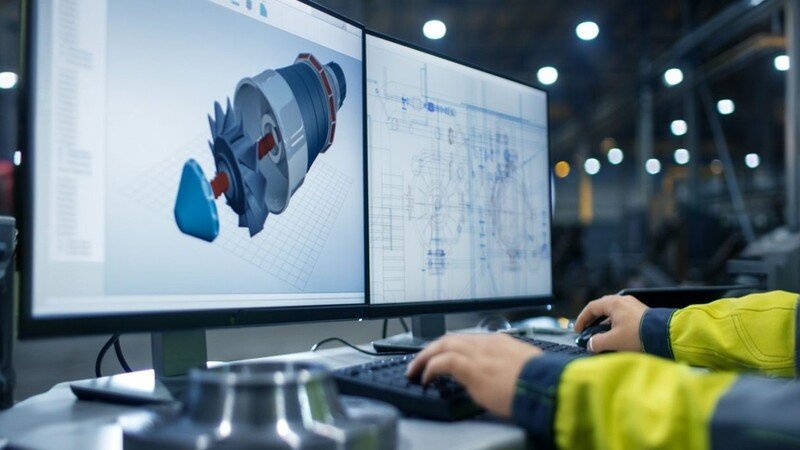
How Does the Rapid Prototyping Process Work?
To understand the power of rapid prototyping, let’s break down the process step by step. No matter the method—3D printing, التصنيع باستخدام الحاسب الآلي, or casting—the journey from idea to prototype usually follows these core stages:
خطوة 1: Design Creation
Everything begins with a 3D digital design created using برنامج CAD such as SolidWorks, أوتوكاد, الانصهار 360, or CATIA. This stage is critical because the digital file serves as the “blueprint” for the prototype. Designers focus on creating accurate models that reflect the intended size, شكل, and features of the final product.
خطوة 2: Data Preparation
Once the model is ready, it must be converted into a machine-readable format, usually an STL file. This format breaks down the 3D design into tiny triangles, allowing the prototyping machine to interpret and recreate it layer by layer. Depending on the chosen technology, additional slicing software may be used to set parameters like layer thickness, printing speed, and material type.
خطوة 3: إعداد الآلة
Next comes preparing the prototyping machine. هذا ينطوي:
Calibrating the build platform.
Loading the appropriate material (راتنج, filament, powder, أو المعدن).
Setting environmental conditions like temperature and humidity (important for materials like nylon or resin).
خطوة 4: Prototype Building
The magic happens here. The machine constructs the object layer by layer according to the CAD design. على سبيل المثال:
SLA uses a laser to harden liquid resin.
FDM extrudes heated plastic filament.
SLS uses a laser to fuse powdered material.
This process can take anywhere from minutes to several hours, depending on the size, تعقيد, and chosen method.
خطوة 5: المعالجة البعدية
Once the raw prototype is built, it often requires finishing touches. Post-processing may include:
Sanding or polishing for a smoother surface.
Painting or coating for realistic looks.
Heat treatment for added strength.
Assembly if multiple parts were printed separately.
This final step transforms the prototype from a rough model into something ready for presentation, الاختبار, or even small-scale functional use.
Why is Rapid Prototyping Important in Manufacturing?
Now that we’ve covered what rapid prototyping is and how it works, let’s talk about why it’s such a big deal in the manufacturing industry.
تقليديا, companies had to rely on slow and costly prototyping methods. Imagine designing a car part and waiting weeks for a physical model, only to discover it doesn’t fit correctly. That delay could cost thousands of dollars and months of wasted effort. Rapid prototyping changes the game by allowing quick, affordable iterations.
Here’s why it’s vital:
Faster Iterations: Designers can test multiple versions of a product in days instead of months.
Cost-Effective Development: Identifying design flaws early reduces the need for expensive rework later.
Better Decision Making: Stakeholders, investors, and customers can physically hold and evaluate a model rather than just look at a drawing.
Improved Product Quality: Functional prototypes allow real-world testing, ensuring the final product performs as expected.
ميزة تنافسية: Companies that use rapid prototyping can launch products faster, staying ahead of competitors.
Take the automotive industry, على سبيل المثال. Car manufacturers use rapid prototyping to design dashboards, اجزاء المحرك, and lighting systems. Instead of waiting months, they can create a prototype in days, test it, refine it, and move to production faster. بصورة مماثلة, في الرعاىة الصحية, surgeons can practice on 3D-printed anatomical models before operating on a patient—something unimaginable before rapid prototyping.
باختصار, rapid prototyping is not just a tool; إنه strategic advantage for businesses that want to innovate faster and smarter.
Advantages of Rapid Prototyping
The benefits of rapid prototyping extend far beyond speed. It’s a powerful tool that transforms the way products are developed and refined. Let’s look at the major advantages:
1. Speed of Development
One of the biggest strengths of rapid prototyping is its ability to transform ideas into models quickly. What used to take weeks or months can now be achieved in a matter of days—or even hours. This allows companies to shorten their product development cycles and react faster to customer needs.
2. تخفيض التكلفة
Mistakes in design can be expensive when discovered late in the process. Rapid prototyping minimizes this risk by enabling early testing. Fixing flaws in a prototype costs far less than redesigning an entire production mold. This makes the overall development process more economical.
3. Improved Design Quality
Every iteration of a prototype improves the design. Because rapid prototyping allows for quick adjustments, designers can fine-tune aesthetics, ergonomics, and functionality until the product is as close to perfect as possible.
4. Encourages Creativity and Innovation
With traditional methods, designers were often limited by cost and time. But with rapid prototyping, they have the freedom to experiment. الأشكال المعقدة, تفاصيل معقدة, and bold ideas can all be tested without breaking the budget.
5. Customization and Personalization
Industries like healthcare and consumer products benefit enormously from rapid prototyping’s ability to create customized solutions. From personalized prosthetics to custom-fit wearables, the possibilities are endless.
6. اختبار وظيفي
Many rapid prototyping methods produce parts strong enough for real-world testing. This means companies can evaluate not only how a product looks but also how it performs.
7. تقليل النفايات
Unlike subtractive manufacturing (where material is cut away), many rapid prototyping methods are المضافة, using only the material needed to create the part. This makes the process more environmentally friendly and cost-efficient.
8. Market Advantage
أخيراً, the speed and flexibility of rapid prototyping allow businesses to beat competitors to market. In fast-moving industries like electronics, this advantage can mean the difference between leading the market or falling behind.
Main Techniques Used in Rapid Prototyping
Rapid prototyping isn’t a one-size-fits-all process. بدلاً من, ويشمل variety of techniques, each with its own strengths, نقاط الضعف, والتطبيقات. Choosing the right technique depends on factors like budget, مواد, desired accuracy, and prototype purpose. Let’s explore the most widely used methods.
مجسم (SLA)
SLA is the grandfather of 3D printing, invented by Chuck Hull in 1984. It works by curing liquid resin with a UV laser, layer by layer, until a solid object is formed.
مزايا: دقة عالية, smooth surface finish, ideal for detailed models.
محددات: Materials are brittle compared to thermoplastics, and post-curing is required.
الأفضل ل: Dental models, jewelry prototypes, and visual prototypes requiring fine details.
Fused Deposition Modeling (FDM)
FDM is one of the most popular methods due to its affordability and ease of use. It works by extruding melted thermoplastic filament through a heated nozzle.
مزايا: فعالة من حيث التكلفة, مجموعة واسعة من المواد (PLA, عضلات المعدة, بيتغ, إلخ.), accessible for hobbyists.
محددات: Lower resolution compared to SLA, visible layer lines.
الأفضل ل: Quick concept models, low-cost functional prototypes.
Selective Laser Sintering (SLS)
SLS uses a laser to fuse powdered material—usually nylon or composite powders—into solid layers.
مزايا: No need for support structures (powder acts as support), durable functional parts, الهندسة المعقدة.
محددات: Rough surface finish, expensive machinery.
الأفضل ل: Engineering prototypes, small-batch functional parts.
Digital Light Processing (DLP)
DLP is similar to SLA but uses a digital light projector instead of a laser. This makes the process faster, as each layer can be cured in a single flash of light.
مزايا: سرعة عالية, high resolution.
محددات: Limited to photopolymer resins, post-curing needed.
الأفضل ل: High-detail prototypes where speed is crucial.
Laminated Object Manufacturing (LOM)
LOM builds prototypes by laminating sheets of material (like paper, بلاستيك, أو المعدن) and cutting them into shape with lasers or blades.
مزايا: تكلفة منخفضة, good for large models.
محددات: Poor surface finish, limited detail resolution.
الأفضل ل: Large-scale concept models.
Binder Jetting
في هذه العملية, أ liquid binding agent is deposited onto powder layers to “glue” them together. The part is later cured and sometimes infiltrated with another material for strength.
مزايا: Can print in full color, relatively affordable.
محددات: Parts are brittle unless post-processed.
الأفضل ل: Visual prototypes, architectural models.
Direct Metal Laser Sintering (DMLS) & Selective Laser Melting (SLM)
Both DMLS and SLM are used for metal prototyping. They employ powerful lasers to fuse metal powders layer by layer.
مزايا: Extremely durable, suitable for end-use metal parts.
محددات: High cost, requires expert operation.
الأفضل ل: الفضاء الجوي, السيارات, والزرع الطبي.
Electron Beam Melting (إب)
EBM uses an electron beam instead of a laser to melt metal powders.
مزايا: Strong metal parts, minimal internal stress.
محددات: Limited to conductive metals, expensive.
الأفضل ل: Aerospace and orthopedic implants.
PolyJet Printing
PolyJet works by spraying tiny droplets of liquid resin and curing them with UV light. Multiple materials and colors can be printed in a single run.
مزايا: Multi-material, high detail, realistic looks.
محددات: Limited material durability, expensive.
الأفضل ل: Prototypes that require realistic aesthetics.
Injection Molding with Rapid Tooling
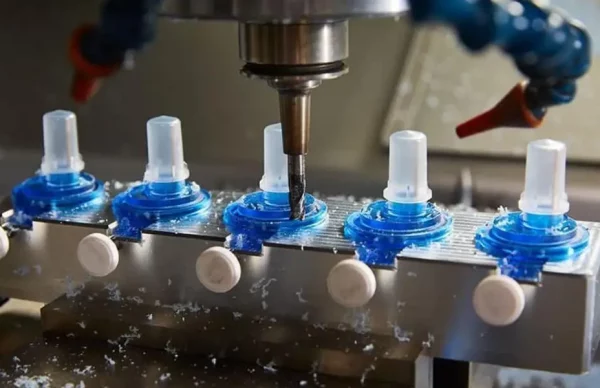
Injection Molding with Rapid Tooling
This involves creating molds quickly (via 3D printing or CNC) and using them for small-batch injection molding.
مزايا: Produces real parts identical to final production.
محددات: Tooling still takes time and cost.
الأفضل ل: Bridge production between prototype and mass manufacturing.
Multi Jet Fusion (MJF)
MJF uses a fusing agent deposited on a powder bed, which is then fused by heat.
مزايا: Strong functional parts, fine detail, faster than SLS.
محددات: Limited material options (mainly nylon).
الأفضل ل: Functional prototypes requiring strength and detail.
التصنيع باستخدام الحاسب الآلي
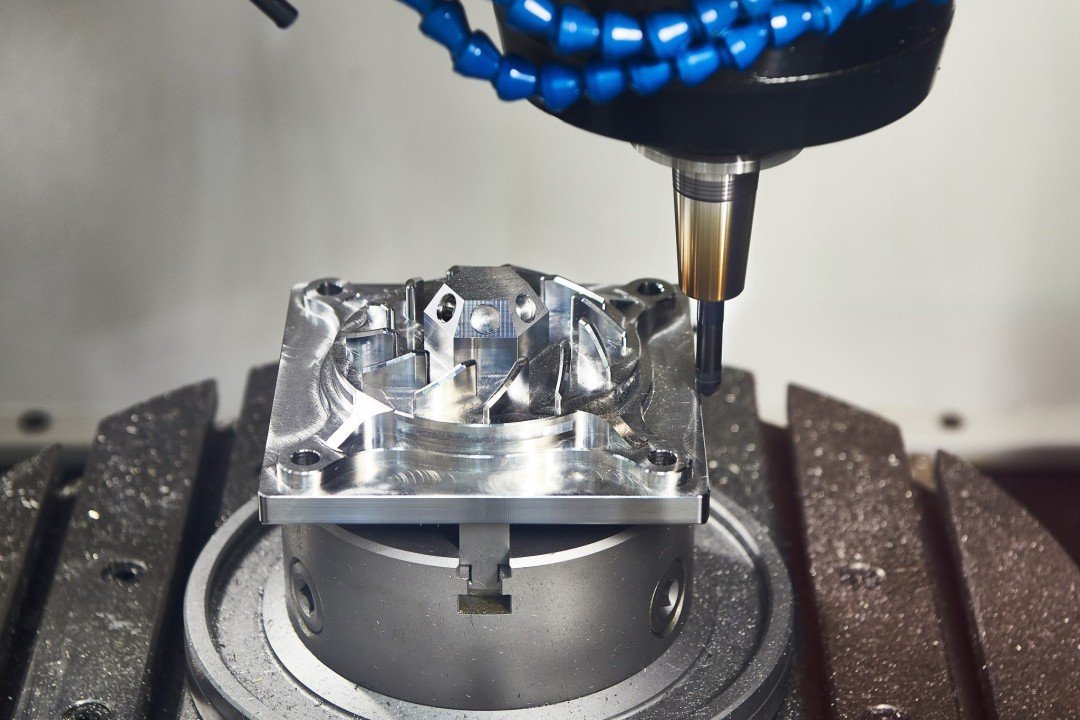
التصنيع باستخدام الحاسب الآلي
Though not additive, CNC machining is considered rapid prototyping because it can quickly produce prototypes from real materials.
مزايا: قوة عالية, دقة, and wide material options (المعادن, البلاستيك).
محددات: Subtractive process, waste of material.
الأفضل ل: Engineering prototypes and functional testing.
القطع بنفث الماء
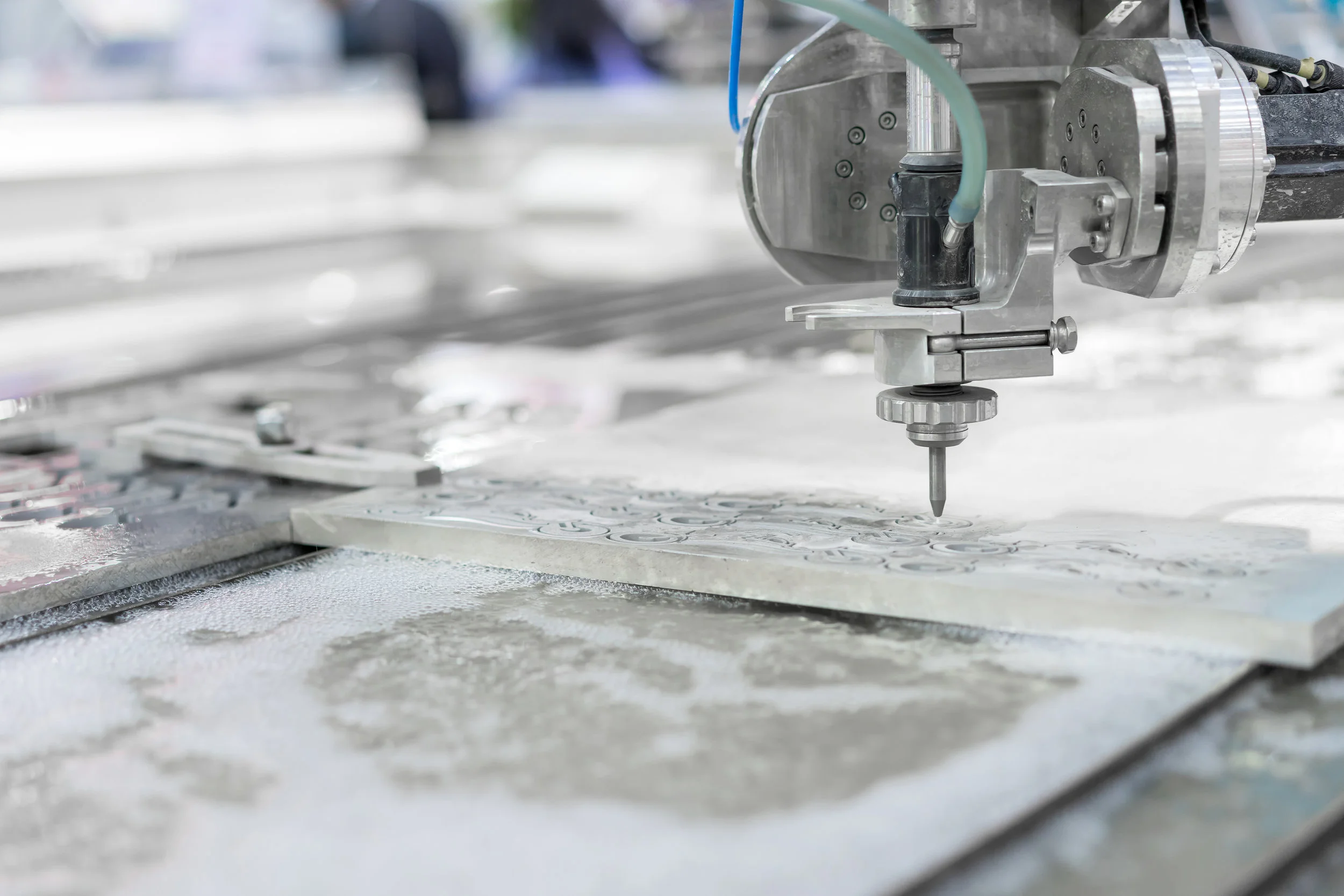
القطع بنفث الماء
Uses high-pressure water (sometimes with abrasives) to cut through material.
مزايا: Can cut almost any material, including metal and glass.
محددات: Limited to 2D or flat designs.
الأفضل ل: Quick flat prototypes.
صب فراغ

صب فراغ
This technique creates silicone molds from a master model, which are then used to produce plastic prototypes.
مزايا: فعالة من حيث التكلفة للإنتاج منخفض الحجم, replicates injection molding quality.
محددات: Not ideal for high volumes.
الأفضل ل: Pre-production runs and functional testing.
Types of Rapid Prototyping
Different projects require different kinds of prototypes. Here are the major types:
Proof-of-Concept Prototypes
These are simple models used to demonstrate feasibility. They may not look like the final product but serve to validate whether the idea works.
Low-Fidelity Prototypes
Basic models created quickly, often for internal discussions. They prioritize speed and cost over appearance.
High-Fidelity Prototypes
مفصلة, realistic models that closely resemble the final product in look and feel. Used for presentations and investor pitches.
Looks-Like Prototypes
Focus on aesthetics—shape, لون, texture—rather than function. Ideal for marketing or customer feedback.
Works-Like Prototypes
Opposite of looks-like prototypes—focus is on functionality rather than appearance.
Engineering Prototypes
Used to test mechanical properties, أداء, and durability under real-world conditions.
تصديق & Manufacturing Prototypes
These are near-final versions used to test manufacturability, حَشد, and compliance with standards.
Role of Software in Rapid Prototyping
Hardware may build the parts, لكن software drives the process. Without advanced design and simulation tools, rapid prototyping would not be possible.
CAD Software
أدوات مثل أوتوكاد, Solidworks, كاتيا, and Fusion 360 are the foundation of prototyping. They allow designers to create detailed 3D models.
محاكاة & Analysis Software
برامج مثل ANSYS و Autodesk CFD simulate real-world stresses, fluid flow, or heat transfer on designs before they are physically tested.
Slicer Software for 3D Printing
Applications like Cura, Simplify3D, and Slic3r prepare CAD files for 3D printing by slicing them into layers.
CAM Software for CNC
Software such as Mastercam and GibbsCAM converts CAD designs into machine instructions for CNC machining.
Specialized Prototyping Tools
PreForm (for SLA printers).
Materialise Magics (for STL editing).
Insight (for industrial FDM machines).
باختصار, the right software ensures that prototypes are دقيق, فعال, وموثوقة.
Materials Used in Rapid Prototyping
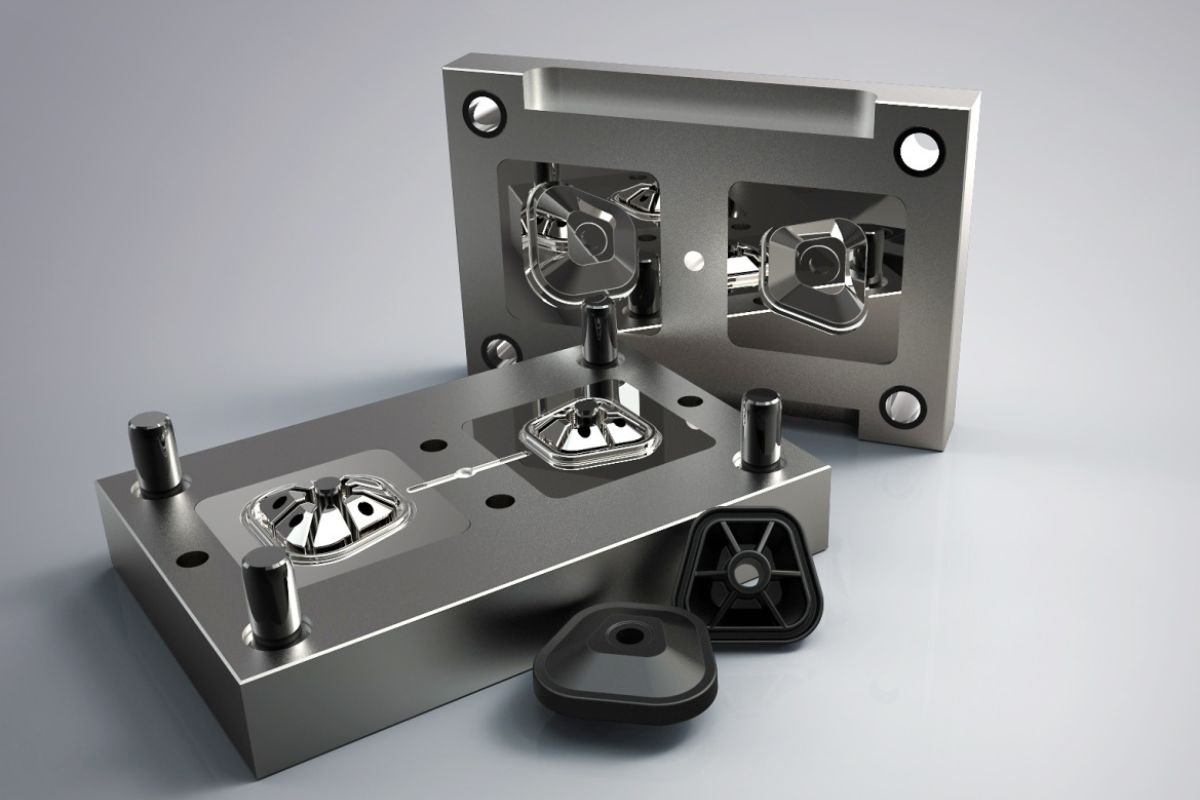
Materials Used in Rapid Prototyping
The material you choose can make or break your prototype. Different technologies allow for different materials:
البلاستيك
عضلات المعدة, PLA, بيتغ, نايلون, البولي.
Widely used due to affordability, براعه, and ease of printing.
المعادن
الألومنيوم, التيتانيوم, الفولاذ المقاوم للصدأ, إنكونيل.
Ideal for strong, functional prototypes in aerospace and automotive.
راتنجات
Photopolymers used in SLA and DLP for high-detail parts.
Options include flexible, قاسٍ, شفاف, or castable resins.
المركبات
ألياف الكربون, الألياف الزجاجية, Kevlar-reinforced plastics.
Lightweight yet strong materials for high-performance parts.
Ceramics and Wax
Used for specialized applications like dental crowns or investment casting.
Applications of Rapid Prototyping Across Industries
Rapid prototyping has spread across nearly every industry. Here’s where it shines most:
السيارات
مكونات المحرك, لوحات المعلومات, and lighting prototypes.
Reduces time-to-market for new car models.
الفضاء الجوي
Lightweight parts with complex geometries.
Critical for reducing fuel consumption and improving efficiency.
الرعاىة الصحية
Custom prosthetics, يزرع, and surgical guides.
3D-printed anatomical models for practice before surgery.
مستهلكى الكترونيات
Phone casings, wearables, and device prototypes.
Helps brands refine ergonomics and design before launch.
بنيان
Scale models of buildings for client presentations.
Fashion & Apparel
Footwear, مجوهرات, and custom accessories.
Education & Research
Teaching tools, lab experiments, and student projects.
Entertainment & فيلم
Props, costumes, and special effects.
ادوات رياضية
Helmets, rackets, and performance-enhancing gear.
علم الروبوتات & أتمتة
Functional mechanical components for testing robots and automation systems.
Limitations of Rapid Prototyping
While rapid prototyping is a revolutionary process, it’s not without its challenges and drawbacks. Understanding these limitations helps businesses set realistic expectations and choose the right method for their needs.
1. القيود المادية
Not all materials used in prototyping are suitable for final production. على سبيل المثال, photopolymer resins used in SLA are brittle compared to industrial plastics, and many 3D-printed metals may require post-processing for strength.
2. Size Constraints
Most rapid prototyping machines have limited build volumes. Large parts must be printed in sections and then assembled, which can affect strength and aesthetics.
3. مشكلات الانتهاء من السطح
Some methods, like FDM, leave visible layer lines that require sanding or polishing. While this can be improved with post-processing, it adds time and cost.
4. القوة والمتانة
Not every prototype can withstand real-world stresses. على سبيل المثال, SLA parts may look stunning but often lack durability for functional testing.
5. Cost for Large-Scale Production
While rapid prototyping is cost-effective for single models or small batches, it’s not always suitable for high-volume manufacturing. للتشغيل الأكبر, traditional methods like injection molding remain more economical.
6. Accuracy and Tolerance Concerns
Though technology is improving, certain prototyping methods still struggle with very tight tolerances. This can be a problem for industries like aerospace or medical devices where precision is critical.
باختصار, while rapid prototyping is incredibly powerful, it’s best viewed as a complement to—not a replacement for—mass manufacturing.
Costs Associated with Rapid Prototyping
The cost of rapid prototyping depends on several factors, and understanding them is crucial for budgeting.
Factors That Influence Cost
نوع المادة – Plastics are cheaper than metals, while specialty resins or composites cost more.
Complexity of Design – Intricate designs require more machine time and material.
Size of the Prototype – Larger models consume more resources.
Post-Processing Needs – Polishing, تلوين, or heat treatment adds to costs.
Technology Used – SLA and FDM are cheaper; metal-based techniques like DMLS are much more expensive.
Estimated Cost Ranges
FDM Prototypes: $10–$200 (depending on size and material).
SLA Models: $50–$500.
SLS Functional Parts: $200–$2,000.
Metal Prototypes (DMLS/SLM): $500–$10,000+.
CNC Machined Parts: $100–$5,000 depending on complexity.
Cost Comparison with Traditional Prototyping
Traditional methods like injection molding require expensive tooling—often in the tens of thousands of dollars. في المقابل, النماذج الأولية السريعة eliminates tooling costs, making it far more economical for early-stage design and small production runs.
While not always the cheapest for mass production, rapid prototyping provides massive savings during development and testing, where flexibility matters most.
Common Mistakes to Avoid in Rapid Prototyping
Even though rapid prototyping is designed to simplify development, mistakes can still derail projects. Here are some common pitfalls:
1. Overlooking Design for Manufacturability (DfM)
A prototype may look great but might not be feasible for large-scale production. Always design with eventual manufacturability in mind.
2. Choosing the Wrong Material
Using the wrong material can produce misleading test results. على سبيل المثال, testing mechanical strength with brittle resin instead of industrial plastic may give false performance data.
3. Ignoring Tolerances
Not all methods provide high precision. If you need tight tolerances, technologies like CNC or SLM might be better than FDM or SLA.
4. Skipping Thorough Testing
A prototype isn’t just for looks—it’s also for testing. Skipping stress tests, thermal tests, or user feedback can lead to costly mistakes later.
5. Neglecting Post-Processing
Many prototypes require sanding, تلوين, or heat treatment. Failing to account for this can result in unfinished or unrealistic models.
6. Over-Focusing on Aesthetics
While a good-looking model is important, function should never be sacrificed. A balance between aesthetics and performance ensures a realistic final product.
Avoiding these mistakes ensures you get the most accurate and useful results from your prototyping efforts.
How to Choose the Right Rapid Prototyping Method
With so many techniques available, selecting the right one can be overwhelming. Here’s a practical guide:
1. Consider Project Requirements
Do you need a model for visual presentation? → SLA, DLP, or PolyJet.
Do you need الاختبار الوظيفي? → SLS, FDM, CNC, or MJF.
Do you need a metal prototype? → DMLS, SLM, or EBM.
2. Assess Material Needs
For strong plastics → Nylon (SLS, MJF).
For flexibility → TPU or flexible resin.
For metals → Aluminum, التيتانيوم, or Stainless Steel.
3. Evaluate Precision and Complexity
If your prototype involves intricate details, choose SLA, DLP, or PolyJet. For large, robust parts, CNC or FDM may be better.
4. Balance Cost and Budget
If you’re working with limited funds, FDM is the most affordable. For higher budgets where detail and strength matter, invest in SLA, SLS, or metal printing.
5. Factor in Time-to-Market
If speed is critical, DLP and PolyJet offer the fastest turnaround.
6. Align with Final Product Requirements
Your prototype should mimic the final product as closely as possible—whether that means strength, المرونة, or aesthetics.
7. Sustainability and Environmental Impact
Some industries prioritize eco-friendly materials. Consider biodegradable plastics or recyclable materials where possible.
By weighing these factors, you can make an informed decision that maximizes efficiency, جودة, وفعالية التكلفة.
خاتمة
Rapid prototyping is more than just a tool—it’s a paradigm shift in product development. From its humble beginnings in the 1980s with Chuck Hull’s stereolithography to today’s vast array of techniques, it has transformed how ideas become reality.
It offers speed, المرونة, and cost savings that traditional prototyping methods could never match. Whether you’re creating a quick proof-of-concept, testing a functional design, or preparing for mass production, rapid prototyping allows for faster iterations, reduced risk, and improved innovation.
بالطبع, it has its limitations—such as material restrictions and cost challenges for large-scale production—but when used strategically, it’s one of the most powerful tools for modern manufacturing.
مع استمرار تطور الصناعات, rapid prototyping will only grow in importance, enabling companies, entrepreneurs, and even hobbyists to bring ideas to life faster than ever before.
الأسئلة الشائعة
1. What are the most common rapid prototyping techniques?
Some of the most widely used techniques include SLA, FDM, SLS, DLP, التصنيع باستخدام الحاسب الآلي, and DMLS for metals. Each has unique strengths depending on project needs.
2. Which industries benefit the most from rapid prototyping?
Industries like automotive, الفضاء الجوي, الرعاىة الصحية, مستهلكى الكترونيات, and education are leading adopters. They use it for everything from medical implants to car components.
3. Is rapid prototyping suitable for mass production?
Not directly. While rapid prototyping is great for design, الاختبار, وإنتاج دفعة صغيرة, mass production is still better served by traditional methods like injection molding.
4. How does rapid prototyping differ from 3D printing?
3D printing is a subset of rapid prototyping. While 3D printing is additive manufacturing, rapid prototyping also includes methods like CNC machining, صب فراغ, and waterjet cutting.
5. What’s the future of rapid prototyping?
The future lies in faster machines, more durable materials, and integration with AI-driven design. We’ll likely see rapid prototyping become even more mainstream in manufacturing and consumer applications.

